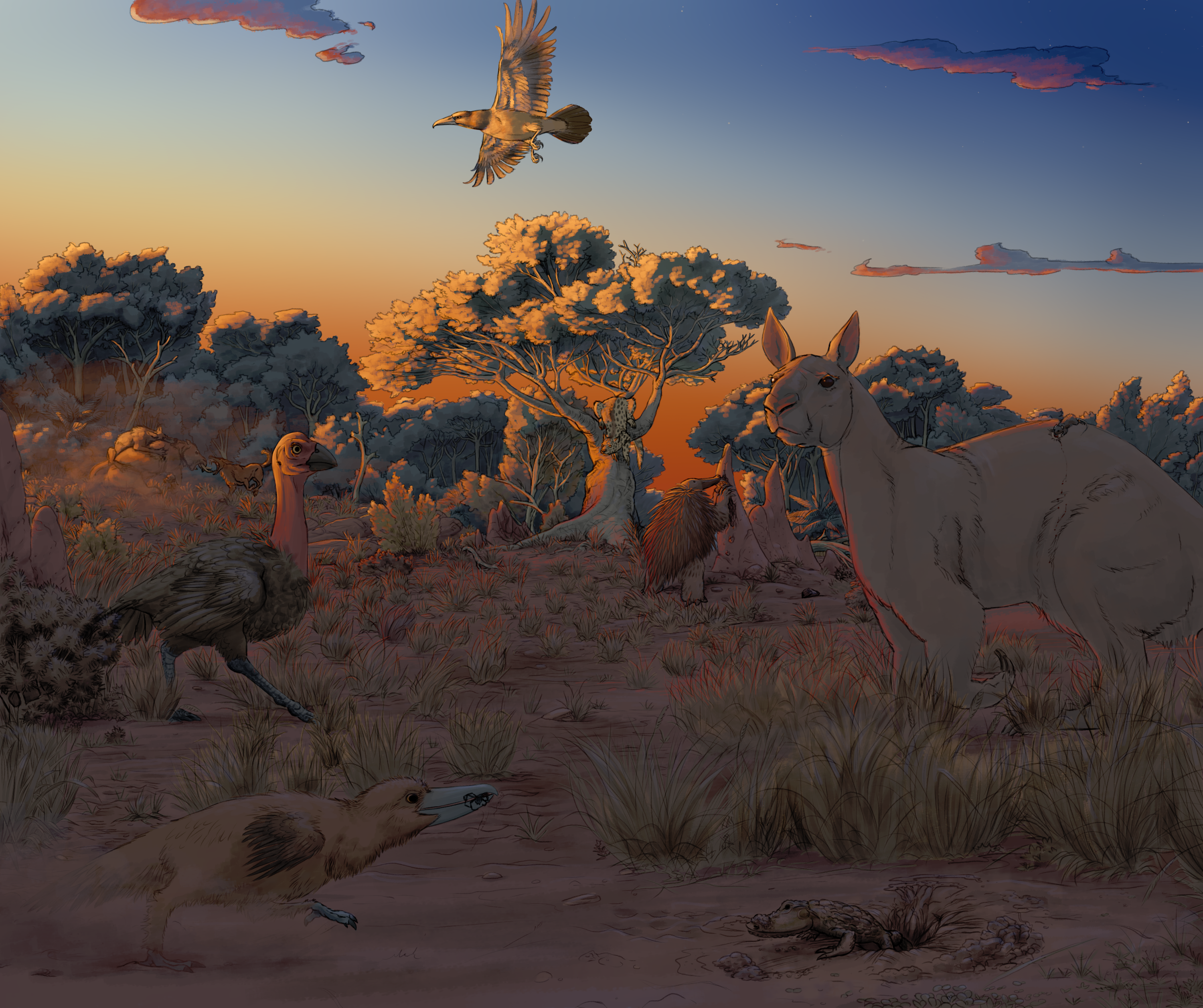HOME | DD
 ScreenSamurai — Great Australian Plain: Titans and Dwarfs
ScreenSamurai — Great Australian Plain: Titans and Dwarfs

#australia #bird #dingo #grassland #kangaroo #kookaburra #magpie #mammal #toad #bushturkey #amphibian #landscape #marsupial #speculativeevolution #speculativebiology #speculativezoology
Published: 2021-01-26 22:00:32 +0000 UTC; Views: 20097; Favourites: 216; Downloads: 20
Redirect to original
Description
Made by Exo-SpectralThe Great Australian Plain is a unique grassland due to its diverse animal life. One reason for this is the continent being an island. Islands cause wildlife to diversify into multiple different niches because it is isolated from other landmasses. Another reason is that some species of marsupials are a dominant force in this ecosystem. There are only two other continents where marsupials live (North America and South America), and the marsupials don’t have a good foothold in those environments. However, Australia is one of the only places where you can find these large marsupials.
In this picture, you can see some of the wildlife that lives in this area of the world. One of the smallest and rarest to see is the Australian mole toad. This small descendent of the cane toad has taken a niche similar to moles and other digging animals. Another ground-dwelling animal that lives here is the burrowing kookaburra. This flightless relative of kingfishers has evolved to live a nocturnal grounded lifestyle, similar to a kiwi or grouse. The smallest marsupial that lives on these plains is the vampire short-nosed antechinus. This tiny rat-like mammal behaves similarly to a vampire bat, sucking on the blood of large herbivores. One large herbivore that it targets the most is the giant ground kangaroo, a large descendent of the red kangaroo. This animal is one of the largest herbivores that live on the plain. Another large herbivore is the tusked wombat, which descended from the common wombat. In the picture, the wombat is getting by two saber-toothed dingoes. The saber-toothed dingo is a dingo that has evolved hyper-carnivorous animals. The large bird that is on the left side of the picture is the ostrich bush-turkey. This fowl is an emu-like bird descended from the Australian bush-turkey. Emus haven’t gone extinct, but they have moved to the rainforests. The predatory bird in the sky is the Australian hawkpie, a descendent from the aggressive Australian magpie. Another strange predator that lives on the plain is the omnivorous leopard hunting kangaroo. This kangaroo evolved to eat other animals due to the scarcity of food in its area. Last but not least is the giant echidna, which is exactly what it sounds like.
Related content
Comments: 15

👍: 3 ⏩: 1

👍: 1 ⏩: 1

👍: 2 ⏩: 0

I got a feeling that marsupials will spread if Australia will connect to Asia or other continents.They are very adaptable.
👍: 1 ⏩: 1

👍: 1 ⏩: 1

Why?Kangaroos have the most efficient way of locomotion of any mammal beside the camels.Wombats gave rise to horse sized freaks.Metatherians dominated small or megafaunal mammal niches in S.America and Australia for a reason.And they still are pretty adaptable thanks to being able to pump as many babies as possible in a short time.Knowing natural history,role reversals are quite a common theme.
Who told you that small mammals can't be successfull?
👍: 3 ⏩: 1

👍: 0 ⏩: 1

Placentals were a thing in S.America,and native ungulates were there since the dinosaurs died out,but those were more related to horses .The interchange was quite interesting since the migration was quite equal on both sides,culminating with a change that spelt disaster to the neotropical animals,after all South America is big.The fauna you speak of was already dead and the immigrants filled the niches instantly...Where you learnt Australia is an island?Is too big to be an island and to be honest australian creatures are probably tough since most of them live in arid deserts.
👍: 0 ⏩: 1

👍: 0 ⏩: 0

👍: 2 ⏩: 0

Beautifully done especially the setting sun gives it that nice overall glow! Thanks!
👍: 2 ⏩: 0

👍: 3 ⏩: 0

👍: 1 ⏩: 0

👍: 2 ⏩: 0

👍: 2 ⏩: 0

























